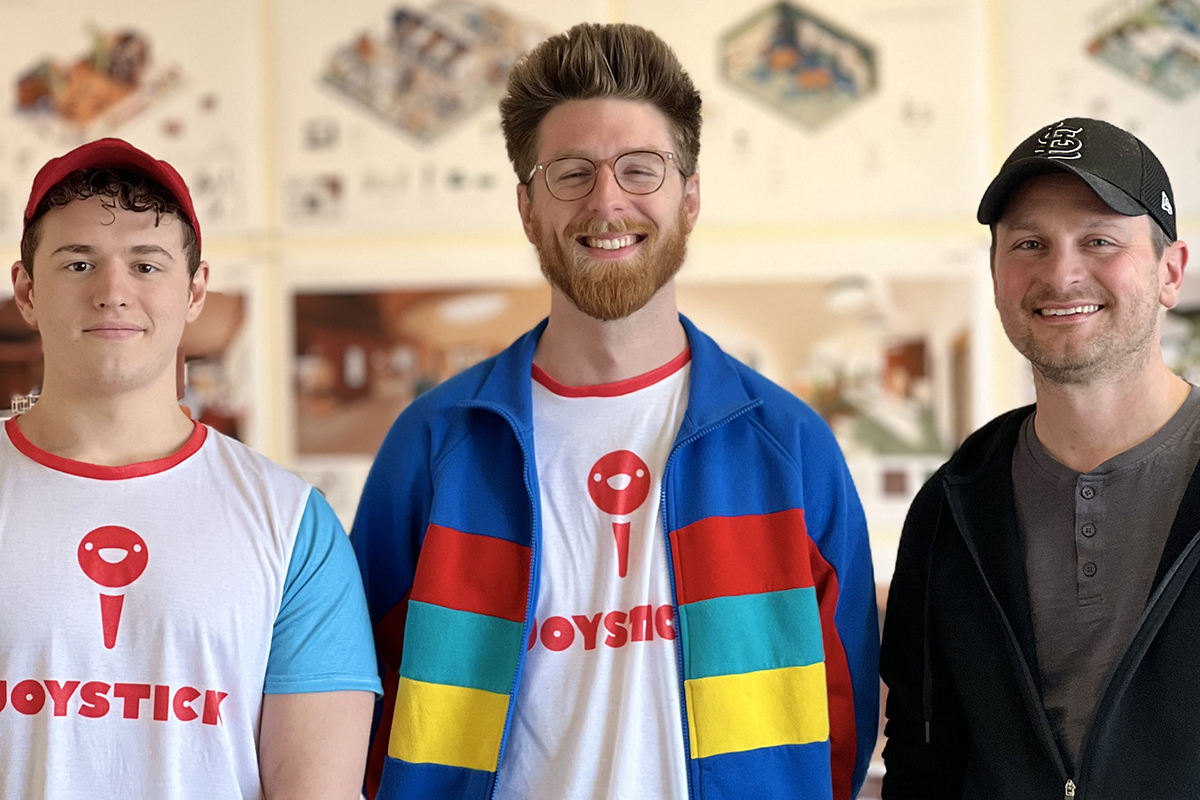For as long as he can remember, Phil Snowbarger, ’20, has tried to convince his friends to make a video game.
Last year, he finally persuaded a close friend, Jacob Lear, who started learning a bit of coding. Snowbarger brings extensive design experience to the table. The pair decided to combine their strengths and participate in a Game Jam, a timed event where participants make a video game from scratch.
After their game ranked in the Top 40 out of 1,800 submissions, Snowbarger shared it on his work Slack channel. He received great feedback from his colleagues, which opened up a dialogue about taking the project further. Those conversations have resulted in a publishing deal with one of the most recognizable names in the gaming industry: Atari.
“I think if childhood Phil could meet me right now, I think he would think I’m a pretty cool guy,” Snowbarger said.
The new title, Kombinera, will be available next month on 11 gaming platforms, including PlayStation, Xbox One and Nintendo Switch. The game lets players take control of multiple-colored balls while navigating through more than 300 increasingly perilous environments and puzzles.
Kombinera is being developed by Snowbarger’s employer, Graphite Lab, a St. Louis-based video game developer. The company already boasts one original title, Hive Jump, available on Xbox One, Nintendo Switch, Steam and Wii U.
Graphite Lab has also been hired by publishers like Hasbro, Disney and Atari, including developing RollerCoaster Tycoon Puzzle, based on a beloved franchise. Sixteen Graphite Lab team members worked on that game before its release, including Snowbarger, who contributed artwork while serving as a summer intern earlier in his career.
“We’re always interested in bringing new ideas to market, so it’s very exciting when those ideas come from within our team,” said Matt Raithel, Graphite Lab owner and studio director and professor of practice of game design at Maryville University. “We have a great concept and a legendary partner, and we’re thrilled to be getting Kombinera out into the world.”
Snowbarger said his experiences as an interactive design major at Maryville allowed a smooth transition into the world of video games. While at Maryville, Snowbarger was drawn to motion graphics, which he described as “bringing art to life.” He learned to create characters and make things move in order to tell a story. The skills he learned while creating websites and mobile applications are also key components of game design.
“Our curriculum provides students with a well-rounded experience so that they can confidently pursue many types of career opportunities after they graduate,” said Jon Fahnestock, MFA, director of the graphic and interactive design programs. “We have spectacular students and alumni who are doing amazing things. Phil is special because he’s curious with a creative mind but also talented on the technical side. It was very fun to work with him while he was a student.”
In addition to his coursework, Snowbarger said the tight-knit community helped foster his creative spirit. “The culture at Maryville is very collaborative, and that was very formative for me,” Snowbarger said. “A lot of projects were organized in groups and we always bounced ideas off each other and helped each other out. It’s an environment where you learn how to work with others and push each other to be better and get excited about what everyone else is doing.”
That collaborative culture extends beyond the Maryville campus and is evident in the journey to publishing Kombinera. The game is unique because it was conceived and created independently from Graphite, but the team loved it so much that they brought Snowbarger and Lear into the fold to help get the game launched. The project is the result of many years of intentional work by Raithel and the Graphite Lab team with the goal of making St. Louis a hub for the video game industry.
“There’s a lot of teamwork that took place, and it’s a complementary success between all these groups,” Raithel said. “I hope this game is an example for future projects. Let’s get more attention and more teams growing. Let’s go bigger and wider. We have a lot of hunger, and we’re hungry to keep this momentum moving forward.”
Thank you IGN, TouchArcade, the St. Louis Business Journal and the St. Louis Post-Dispatch for your coverage of this good news!
